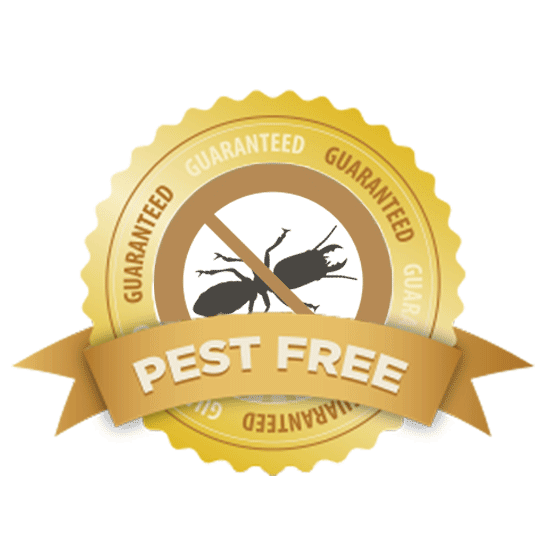Top Quality A1 Pest Control Services Charlotte - Safeguard Your Home
Top Quality A1 Pest Control Services Charlotte - Safeguard Your Home
Blog Article
Bed Bug Therapy Malfunction: Contrasting Chemical Vs. Non-Chemical Solutions
In the realm of bug control, specifically when handling the persistent problem of bed pests, the selection between chemical and non-chemical therapy options can be an essential one. Both methods supply distinct advantages and drawbacks, affecting variables such as efficiency, safety and security considerations, and overall expense. By analyzing the nuanced information of each technique, a clearer understanding of which path to seek in attending to a bed bug problem can be achieved.
Efficiency of Chemical Treatments
Chemical treatments for bed pest invasions have been extensively acknowledged for their fast and powerful effectiveness in removing these bugs. When considering the performance of chemical therapies, it is important to comprehend that they can give a quick and complete service to a bed pest problem. Professional exterminators typically depend on insecticides to target bed insects at various phases of their life cycle, consisting of eggs, grownups, and nymphs. These chemicals normally function by disrupting the bed pests' nerve system, causing paralysis and eventual death.
Furthermore, chemical treatments have the advantage of using recurring effects, indicating that they can continue to remove bed bugs also after the first application. This recurring activity is particularly useful in combating any potential re-infestations. Additionally, the rapid action of chemical therapies can bring relief to individuals facing serious bed bug infestations, enabling them to gain back control of their home promptly.
Safety And Security Worry About Chemical Solutions
When using chemical solutions for bed pest treatment is guaranteeing the security of owners and the atmosphere,One essential aspect that calls for careful factor to consider. While chemical treatments can be efficient in getting rid of bed insects, they may position risks otherwise dealt with appropriately. One of the primary security interest in chemical remedies is the possible injury they can create to human wellness. Direct exposure to particular chemicals used in bed bug treatments can bring about respiratory system concerns, skin inflammation, or other unfavorable reactions, especially in individuals with pre-existing problems or level of sensitivities. Furthermore, improper application or dosage of chemical pesticides can cause toxic deposits remaining in the treated area, posing long-lasting wellness threats to passengers.
Additionally, the environmental impact of chemical solutions is another significant consideration. Some pesticides made use of in bed pest therapies might be dangerous to valuable bugs, wildlife, and ecosystems if they seep into the dirt or water supply. It is necessary to utilize chemical treatments judiciously, complying with safety guidelines, and thinking about less hazardous options to alleviate these threats and guarantee the risk-free and efficient administration of bed bug infestations.
Advantages of Non-Chemical Methods
Taking into consideration the potential security problems and ecological influence associated with chemical services for bed insect treatment, checking out non-chemical approaches provides an appealing alternative with several unique advantages. Non-chemical techniques supply a safer choice for households, specifically those with animals, youngsters, or individuals delicate to severe chemicals. These strategies eliminate the dangers of direct exposure to you can check here poisonous materials, lowering the potential for damaging wellness impacts. Additionally, non-chemical therapies are ecologically friendly, as they do not add to air or water pollution, making them a lasting selection for pest control.
Furthermore, non-chemical options can be reliable in targeting bed bugs, consisting of hard-to-reach locations where chemical therapies may not penetrate. Techniques such as warm treatment, vacuuming, vapor cleansing, and cushion coverings provide thorough elimination without making use of hazardous chemicals. Additionally, non-chemical methods can be less turbulent, requiring minimal prep work and permitting quicker reentry right into dealt with locations. Overall, choosing non-chemical bed insect therapy approaches not only focuses on safety and environmental management but also makes sure reliable and comprehensive bug control.
Limitations of Non-Chemical Treatments

Furthermore, non-chemical treatments usually call for numerous applications to achieve effective bed bug exterminator eradication. This can be time-consuming and may not always assure complete removal of all bed pests and their eggs, specifically in concealed or hard-to-reach locations.
Moreover, the success of non-chemical therapies heavily counts on correct application and thoroughness, which can be testing for individuals without specialist knowledge. Inadequate application of non-chemical methods may result in insufficient removal, resulting in consistent problems and the demand for extra therapies.
As a result, while non-chemical treatments have their advantages, it is necessary to recognize these limitations and consider them when establishing one of the most effective strategy for taking care of bed pest invasions.
Expense Comparison: Chemical Vs. Non-Chemical Options
Offered the restrictions associated with non-chemical treatments, a crucial facet to assess in the context of bed pest management is the expense comparison between chemical and non-chemical options. In contrast, non-chemical treatments like heat treatment or steam can be extra expensive, with expenses varying from $1,000 to $6,000 for an entire home. While the preliminary price of chemical treatments might seem lower, multiple therapies might be needed to completely get rid of the infestation, potentially raising the general price.
Final Thought

Taking into consideration the possible safety issues and environmental effect associated with chemical options for bed insect treatment, checking out non-chemical approaches provides an encouraging choice with a number of distinctive explanation advantages.Given the constraints associated with non-chemical therapies, a crucial aspect to assess in the context of bed pest administration is the price contrast between chemical and non-chemical choices. In contrast, non-chemical treatments like warm therapy or heavy steam can be more expensive, with costs ranging from $1,000 to $6,000 for a whole home. While the preliminary expense of chemical therapies might appear lower, numerous treatments may be needed to completely eliminate the invasion, possibly increasing the overall price.In verdict, when comparing chemical and non-chemical bed bug therapy choices, it is vital to consider effectiveness, security, benefits, limitations, and price.
Report this page